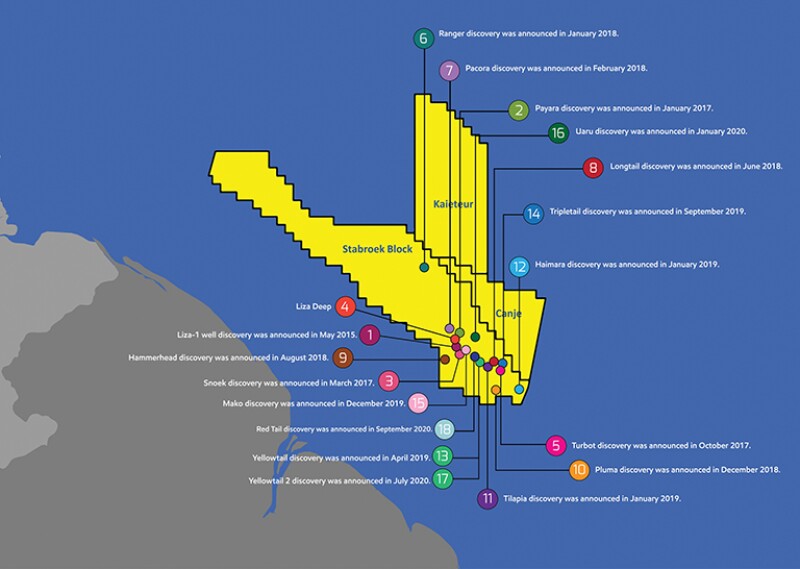ExxonMobil made another new discovery in the Stabroek Block offshore Guyana but came away empty with a well on the Canje block. The Longtail-3 well on the Stabroek block struck 230 ft of net pay, including newly identified reservoirs below those intervals found in the Longtail-1 probe.
“Longtail-3, combined with our recent discovery at Uaru-2, has the potential to increase our resource estimate within the Stabroek block, demonstrating further growth of this world-class resource and our high-potential development opportunities offshore Guyana,” said Mike Cousins, senior vice president of exploration and new ventures at ExxonMobil.
Exxon operates the 6.6-million-acre Stabroek Block as part of a consortium that includes Hess and China’s CNOOC. The new well was drilled 2 miles south of Longtail-1, which was drilled in 2018 and encountered 256 ft of oil-bearing sandstone.
The Uaru-2 well in the Stabroek Block was announced in April. That well struck 120 ft of pay.
While Stabroek drilling success continues, the operator suffered a setback on the nearby Canje block and its Jabillo-1 well. The Stena Carron drillship reached a planned target depth of 6475 m; however the well failed to encounter commercial hydrocarbons. According to partner Eco Oil and Gas, the well was drilled to test Upper Cretaceous reservoirs in a stratigraphic trap.
Drillship Stena Drillmax will next mobilize to drill the Sapote-1 prospect located in the south-eastern section of Canje, in a separate and distinct target from Jabillo. Sapote-1 lies approximately 100 km southeast of Jabillo and approximately 50 km north of the Haimara discovery in the Stabroek Block, which encountered 207 ft of gas-condensate-bearing sandstone reservoir.

